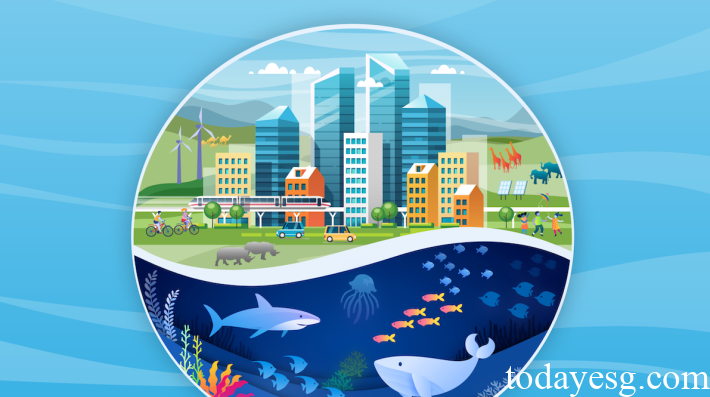Background of Natural Risk Profile
The United Nations Environment Programme and S&P launched the ” Natural Risk Profile “, hoping to provide a basis for the financial industry to measure the natural risk of the portfolio through scientific means.
According to the global risk report released by the World Economic Forum in 2023, climate change and environmental issues occupy the top four in the risks of the next decade, which are: failure of action to mitigate climate change, failure of adaptation to climate change, natural disasters and special climate events, loss of biological diversity and destruction of ecosystems.
This Natural Risk Profile mainly addresses the risks caused by biodiversity loss. It includes three parts, namely, the impact of the company on biodiversity, the risk of the company’s dependence on biodiversity in its business activities, and the potential risk of the company’s operation in biodiversity areas. By quantifying the relevant risk indicators, investors in the financial industry can directly determine the impact of the company on biodiversity changes and adjust asset allocation based on these data.
At the COP15 meeting held last year, many countries signed the “Kunming Montreal Global Convention on Biodiversity“. The Global Convention on Biodiversity requires that “private sector should be encouraged to invest in biodiversity by using influence funds and other tools to ensure that biodiversity is included in official decision-making and national accounts and reduce the relevant risks arising from business and finance”. The proposal of natural risk planning can improve the measurement method of biodiversity.
Introduction to Natural Risk Profile
In short, Natural Risk Profile attempts to analyze natural data from two perspectives and two levels. The first refers to the dependencies of natural resources. The correlation includes the reliance on the ecosystem services and the resilience of the ecosystem services. The second aspect is the impact on natural resources. The impact includes magnitude of potential impact and significance of potential impact.
For the two levels: the first is the impact of the company on nature, which is related to the industry and region where the company is located; the second is the impact of the company’s assets and services on nature, which is related to its geographical location and risk level. For both companies and assets, the method will divide their risks into different ecosystems and calculate their impact on natural resources by weighting.
The Natural Risk Profile method emphasizes the importance of geographical location to the company and assets. For example, in areas with high flood risk, the company engaged in flood control services may obtain higher benefits and have a positive impact on natural risks. The first level here refers to the area where the company is located is the area with high flood risk, and the second level is the company’s flood control service, which has obvious impact on natural risk.

In addition to the direct impact on natural resources, the method also includes the potential impact that indirectly makes the ecosystem difficult to recover. For example, the ecosystem has a certain capacity, and the company’s business activities may not lead to resource instability in the short term, but after long-term development, if the ecosystem is overloaded, it may gradually show negative effects. Under such circumstances, it is necessary to measure the potential impact of the company on ecological resources.
Views of Natural Risk Profile
This approach has taken an important step towards implementing the actions required for change and supporting the important contribution of the financial sector to achieve the objectives of the Kunming-Montreal Global Biodiversity Framework. This method links science, policy, and finance, making nature the core of financial decision-making.
United Nations Environment Programme
In the context of investors and companies’ net zero commitment, the development of this new method will enable companies and investors to better understand, analyze and take action to deal with the key of natural-related risks. At the same time, the method will also be open to the public and developed and improved by stakeholders to improve the transparency and practicability.
S&P
Reference:
UNEP and S&P Global Sustainable1 launch new nature risk profile methodology








